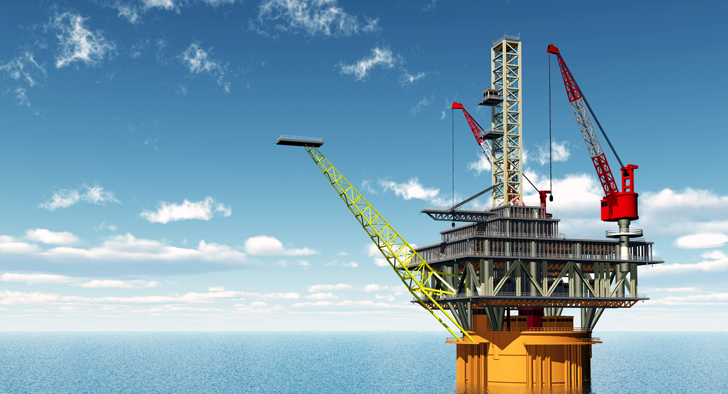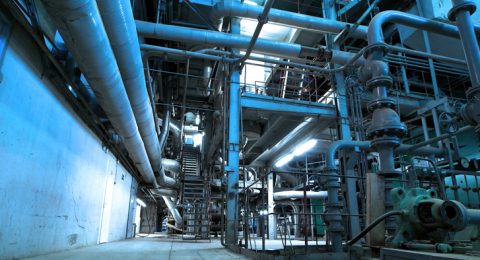By: Passante Adel
What is cost recovery?
Oil and gas exploration and production are costly processes. In several countries –including Egypt– where a Production Sharing model is implemented, operators are left to bear all costs and risks of their exploration, development and production operations. However, once production of oil or gas starts, these operators have a chance to recuperate their costs and make some profit on top.
Cost recovery is considered a cornerstone of Production Sharing Agreements (PSAs); as operators of the concession or international oil companies (IOCs) bear all operation and capital expenditures in a new concession as well as the risks, cost recovery has become a main mechanism through which the contractors are to recover their costs and generate profits.
“Cost recovery can be a very time consuming mechanism, but at the end of the day it is one that works,” expressed Maurizio Coratella, General Manager of Edison Egypt. “Cost Recovery mechanism is fit for purpose in low risk, mid-size investment, straight forward projects. In addition, it does provide a hedge for over-run costs,” stated Ali Hassan, Regional Tax Manager at British Petroleum (BP).
A certain percentage of oil or gas produced from a said concession is allocated for the costs in any PSA, according to Nasser Wali –Deputy Assistant CEO for Agreements at EGPC– that percentage typically varies between 25%-40% in Egypt. A report published by Apache in February 2104 puts the company’s cost recovery ceiling at 40% and allocates 70% to 80% of the profit oil or gas to EGPC and 20% to 30% to the company; these numbers varies on a sliding scale based on production from a given concession.
Profit oil or gas is the remaining of the production after deducting the share allocated to cost recovery. “EGPC’s share of profit oil typically varies between 60% to 80% or even sometimes 90%,” explained Wali. For state entities like EGPC and EGAS, the main aim is to maximize the government’s profit.
TransGlobe Energy –an E&P company based in Alberta, Canada– reveal on their website that the cost recovery ceiling for the company in different concessions in Egypt vary between 25% and 35%. TransGlobe also highlights that company’s share of profit oil is based on a threshold mechanism determined by the actual production. For example, if the company produces 5,000 b/d of oil from their West Gharib concession, their share of the profit oil is 30%; while if the production increases to 10,000 b/d, the company’s share reduces to 27.5% of the profit oil.
How does it work?
Companies can recover exploration costs –including the cost for seismic acquisition, geological and geophysical studies, well drilling, and leasehold, development costs of both wells and infrastructure, as well as operating and overhead costs.
Time frames for the recovery of these costs are decided by EGPC and EGAS. While operating costs are recovered over the course of the same year, development costs are amortized over a period of four to five years.
“Cost recovery is an ongoing process; operators redeem their operating costs in the same year of occurrence, but they redeem the development cost over four to five years,” explained Wali.
According to Apache’s report, the company’s exploration and development costs are amortized at 20%-25% per year.
As companies recover their cost, in some cases the ceiling for the cost recovery is not reached. The excess cost recovery oil or gas is then added to the profit oil, and is shared between EGPC or EGAS and the contractor. However, in some cases excess cost recovery oil may go directly into the government’s share.
In case the operator’s costs exceed the limit or ceiling set for cost recovery, the extra cost is then carried forward for recovery in subsequent periods.
Justifying the cost
The contractor of any given concession or the IOC is bound to justify all its expenditure to EGPC or EGAS. All costs that are recovered should be approved by EGPC and EGAS. “According to the concession agreement, the contractor is not to take any measures with the approval of the respective entity,” explained Wali, “the contractor and EGPC would meet and discuss the procedure or the technology the contractor would like to employ, and in most cases they reach an agreement.”
Contractors normally have to tender for services or technologies used for a concession, some sources in the industry expressed that the process is sometimes very time consuming and there is a risk of the expenses not being regarded as necessary by EGPC or EGAS.
As all expenses and costs need to be justified and approved before hand, the process might be lengthily and somehow tedious. IOCs operating a concession need to find common grounds with EGPC. “Cost recovery is a time consuming and tiring process; you need to convince one’s counterparts that such choices are working for all parties interest,” explained Mr. Coratella.
“If a contractor wishes to go for a technology other than the usual one employed in similar circumstances, all they need to do is justify the use of that technology, and then EGPC would not oppose it if it is for the best,” stressed Wali when asked about the risk of government entities not recognizing expenses.
“The way [cost recovery] is calculated, audited and implemented is very transparent, no one has any surprises,” Mr. Coratella replied to whether it is hard sometimes to justify exploration or development costs to EGPC or EGAS. “The current cost recovery process highlighted in PSAs leaves enough room for IOCs to select the proper technology and to recover all their costs,” added Coratella.
According to Wali, the Egyptian petroleum public sector has lots of experience and know-how on different techniques and technologies used for exploration and production of oil and gas in different locations across the country, they have the capabilities to judge whether a cost is truly necessary or not, “Justifying the costs is a logical process. The Egyptian petroleum sector has a deep understanding of the processes of exploration and development, and has the sufficient expertise –and knowledge of the nature of all areas in which the operators would be drilling –to judge what would be a necessary cost and what would not be justifiable.”
Operators need to obtain an approval by EGPC or EGAS for even production enhancement technologies they wish to employ such as IOR or EOR, Wali explained. “EGPC needs to approve even technologies for enhancing production, we need to make sure any technology employed is safe for the reservoir and will not cause it any damages.” He recalled the technologies employed by Israel for oil recovery during the occupation in Sinai, which resulted in destroying the hydrocarbon reservoirs through a condition referred to as ‘fingering’. It is defined by Schlumberger as a condition whereby the interface of two fluids, such as oil and water, bypasses sections of reservoir as it moves along, creating an uneven, or fingered, profile. Fingering is a relatively common condition in reservoirs with water-injection wells. The result of fingering is an inefficient sweeping action that can bypass significant volumes of recoverable oil and, in severe cases, an early breakthrough of water into adjacent production wellbores.
Cost recovery optimization
The government has recently adopted a different approach to the sector, with more transparency and efficiency. Cost recovery is one of the processes that have been highly affected by that change. Once regarded as inefficient or time consuming, cost recovery now is seen by most operators as a well orchestrated process where cooperation with government entities such as EGPC and EGAS is proven fruitful with efficient communication.
As PSAs have proved to be the most suitable model for countries like Egypt, cost recovery stays one of its main pillars that will continue to need incessant improving for optimal results.








